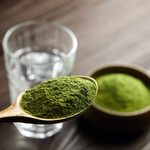Key Ingredients: Sweet Potato
In the October 2008 issue of Reader’s Digest, Bonnie Stern—who teaches Canadians how to eat healthfully while still having fun in the kitchen—and Fran Berkoff—a Toronto dietitian/nutritionist—will be bringing you great recipes and nutritional information based around one key ingredient, for healthy home cooking. October’s key ingredient: sweet potatoes.
Sweet Harvest
Sweet potatoes are very popular now. But it wasn’t long ago that they were a once-a-year vegetable that people ate at Thanksgiving, usually topped with marshmallows. The low-carb craze changed all that; people realized sweet potatoes have a lower glycemic index than regular potatoes. Even though the low-carb fad is essentially over, the good news is sweet potatoes remain on our plates. These days, many of the Top 10 healthy-foods lists include the sweet potato. Full of nutrition and delicious taste, this versatile vegetable is a must-have on your dinner table.
Yam or Sweet Potato?
Most people use these two words interchangeably, but they’re really two very different vegetables. The real sweet potato, the orange-fleshed root vegetable found in abundance in North American supermarkets, is botanically related to morning glories. The yam, the white or light-coloured tuber of a tropical vine, is a starchier, bland vegetable typically found in Latin American, African or Caribbean markets. And when it comes to nutrition, the two are also very different: The sweet potato’s beta-carotene content is significantly higher. And though sweet potatoes may sound fattening, their high nutritional content far outweighs their calories.
Health Bites
- One sweet potato (115 grams), baked in its skin, contains about 120 calories, about 3.5 grams of fibre, 1,096 micrograms of vitamin A (considerably more than your daily recommended amount)
and good amounts of vitamins B6 and C, potassium and folate. In fact, one sweet potato contains approximately the same amount of potassium as a banana. Potassium is the mineral that helps maintain fluid balance and is helpful in managing blood pressure.
- Sweet potatoes are low in sodium and contain almost no fat. The rich orange colour comes from beta-carotene, a powerful antioxidant that converts to vitamin A in your body.
- Avoid sweet potatoes with blemishes, cracks, soft spots and cuts. They should be stored, uncovered, at room temperature in a cool, dry and dark place.
- The 2007 Canada’s Food Guide advises having at least one serving of bright orange vegetables in your diet every day to ensure getting enough vitamin A. This vitamin supports normal growth and development, maintains healthy skin, hair, eyes and teeth, supports a healthy immune system and is needed for night and colour vision. One half cup (125 mL) raw or cooked equals one serving.
Bonnie Stern has been teaching people to have fun in the kitchen, to eat more healthfully and to nourish their families since she started her cooking school in 1973.
Fran Berkoff is a consulting dietitian/nutritionist in Toronto, as well as a columnist for newspapers and magazines, and co-author or several books.



